From the field to the lab, from Bangladesh to Budapest
2025
Sep
29
Researchers of the National Laboratory of Virology returned to Bangladesh for the 4th time, where they not only worked on research projects, but also held trainings, workshops and presentations, to contribute to the development of the local scientific community and inspire future generations of researchers. During the scientific expedition, dr. Zsófia Lanszki examined viruses affecting mammals, principally fruit bats, pets, and livestock. We talked with the researcher about the fieldwork and its results.
What was the goal of your visit in Bangladesh?
This was the third time I have returned to Bangladesh, where originally, we were examining fruit bats for the presence of a Nipah virus, which is a high-risk pathogen to humans. This is why this sickness is on the high priority list of the WHO. In the past years we started to work with other, related viruses too, which are present in dogs, goats, bovines, or other pets and livestock. Besides this my colleagues have been investigating maladies spread by mosquitoes.

In the Paramyxoviridae virus family – to which the Nipah-virus belongs to - there are several viruses that affect not only humans, but also animals. One example is the canine distemper virus, which was also the subject of my PhD research, a virus that we have investigated already during the first to expeditions to Bangladesh. We found a great number of infected dogs, so we expanded our research to livestock too. This resulted in us finding viruses that we couldn’t encounter in Hungary, as our agricultural industry is completely different, we have different protections against infections.
If a sickness appears in Hungary, we can react on the spot. Bangladesh, however, is a country of 170 million people with a territory that is one and a half times the size of Hungary. People live everywhere and following the movement of livestock is impossible. Basically, the number of people living here also raises the risk of infections, as there is a high amount of interaction between humans and livestock.
You also visited a local market and livestock facilities, where you worked with two veterinary students, collecting samples. What are the results of these examinations?
We were investigating the aforementioned virus family, and on the ground, we saw a great deal of animals exhibiting symptoms of infection. This was particularly interesting in the case of the market, because those animals are sold to be eaten.
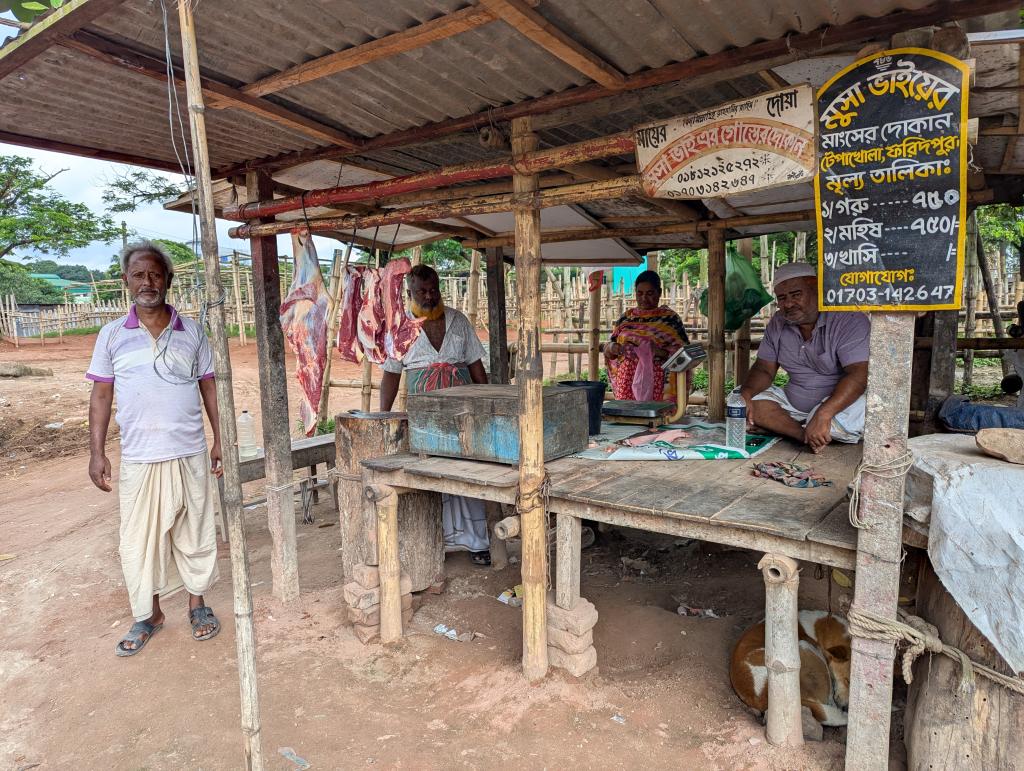
Are these dangerous for human consumption?
Not all of them. There are infections that only affect the animals, but some are zoonotic, meaning they can infect humans too. However already the illnesses only affecting the animals can have serious effects: reduced milk or meat production, etc... The other side is of course the perspective of the animals: it’s not good for them either to be forced together and spread these infections between themselves.
How different it is to do research on the field compared the high-quality equipment and the situation at the PTE?
It is similar, yet different. Our lab has been working with a mobile laboratory on the field for almost ten years, which was initially only used here in Hungary. This essentially means the equipment and the professionals handling them and is suitable for checking the presence of a specific virus in a bat, for example, even in the middle of a forest. In the past few years, we started to use this equipment in Balkan countries, now we apply it in Bangladesh routinely too. This essentially means that we woke up in the morning, collected our samples, took them to the laboratory and processed them on the same day, meaning that in the afternoon or the evening we had the results, whether the virus we were looking for is present in the animal or not.
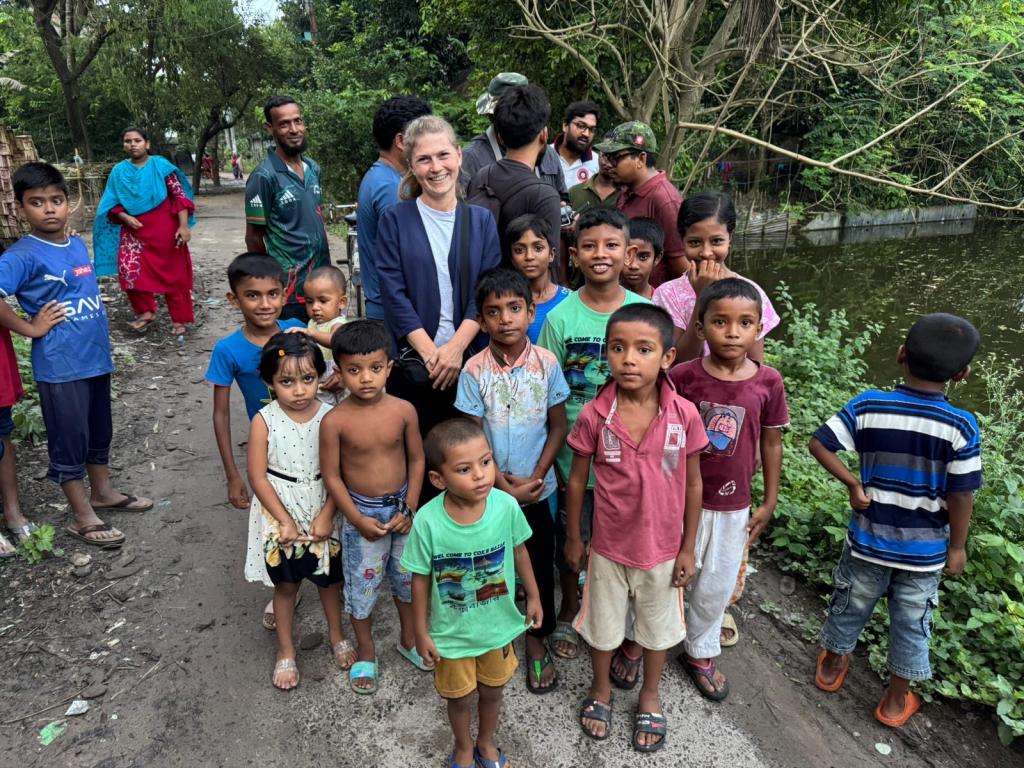
How are the colleagues in Bangladesh? How is the cooperation with them?
I only had positive experiences. It is always important, in any expedition or during any scientific cooperation to include the locals. In Bangladesh people are very welcoming, it is always great to work with them. The connections were originally developed by dr. Gábor Kemenesi. We work with two bigger universities, meaning both local researchers, teachers and students. So basically, there is also an educational aspect.
The goal is not to simply go there, collect the samples and process them, but to leave something behind, in this case, knowledge.
The locals were present during the collection of samples, their processing, they listened and learned; we worked together. From a scientific perspective it is important to apply for grants and write publications together.
What were the results of this expedition?
This one month was particularly productive, we got to know many infections. Until now we worked on Nipah virus in fruit bats and tested stray dogs for canine distemper. This time we started to work on livestock too and after just a week we found 6-7 different infections which is a surprising result.
Wherever we went, we found something, so the trip was definitely succesful, not just for the identification of viruses, but also for building cooperation with the locals. We plan on returning and do further research.
We are also continuously applying for grants and try to organise a visit from our colleagues in Bangladesh to visit Hungary.

You mentioned working together with students. How did they contribute?
We were four people visiting and working in parallel. During the first two weeks the students participated in a cursus from two of my colleagues where they learned about mosquitoes and the infections spread by them. At the same time, we were examining mammals. Those colleagues went home after those first two weeks and we stayed to continue our work in a different city and region. There was also an American colleague participating who made recordings with a drone of the bat population. He used a camera with integrated heat sensors, so the bats showed up as shining little dots, resting on the trees. Later, based on these recordings, we could accurately count the number of bats in a colony. Furthermore, with the drone he could follow the bats in the evening when they left their roosting site, giving us previously unavailable information: how fast, in which direction, how far away from the colony they travelled to forage. It was fantastic!
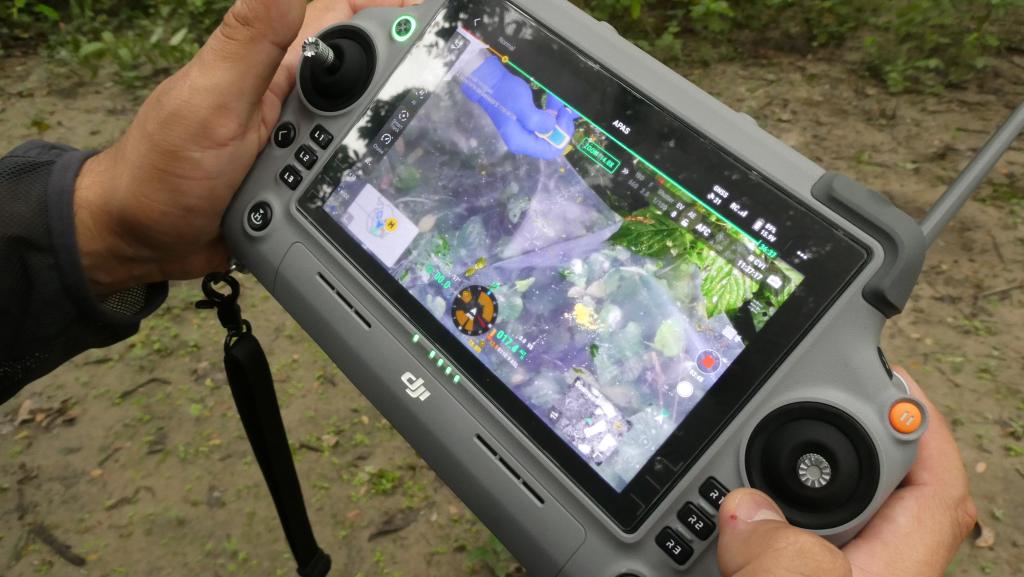
How will the work continue now that you are home? What will you do with the data?
After an expedition like this it is important that we do not stop working. We want to publish our results in cooperation with the locals, and we want to ensure that all the data and results collected can be accessed publicly for other researchers too. Thus, we can contribute to spreading the information about these infections in Bangladesh on an international scale. In the lab we will conduct further research; we want to understand the genome of these viruses. For this, we use genome sequencing, so we can tell which viral strain they belong to, and in which other countries or regions has it been described before.
Bangladesh places great importance on the health of the livestock, as their livelihood greatly depends on these animals and their life quality, therefore they aim to use adequate vaccines. It is not surprising then, that both universities with which we collaborate are veterinary universities, working on the prevention of such illnesses in livestock. Household pets, like dogs, are a different subject. While in cities they are usually vaccinated against rabies, for example, in the countryside this is not the case. They do not take it as seriously as we do, despite rabies being an infection with a 100% mortality rate. Despite this
I have seen students, teachers and researchers alike making an effort: there is a will to ameliorate the situation. They strive to better understand these illnesses so they can defeat them.
One of the researchers showed us an information piece, directing attention to the role of palm juice consumption in the spread of Nipah virus. The locals often make incisions on palm trees and collect the sugary juices in containers from which they drink it. However, if fruit bats do not find enough fruits, often end up consuming the same juice from these containers while also defecating in them. And then people drink this. While the virus itself was never found in these containers, consumption of palm juice from them correlates with infections, so this is one of the main theories regarding the spread of the sickness. Based on this they also try to launch country wide programs, raising awareness and telling people to at least cover these containers, so the bats can have no access to them.
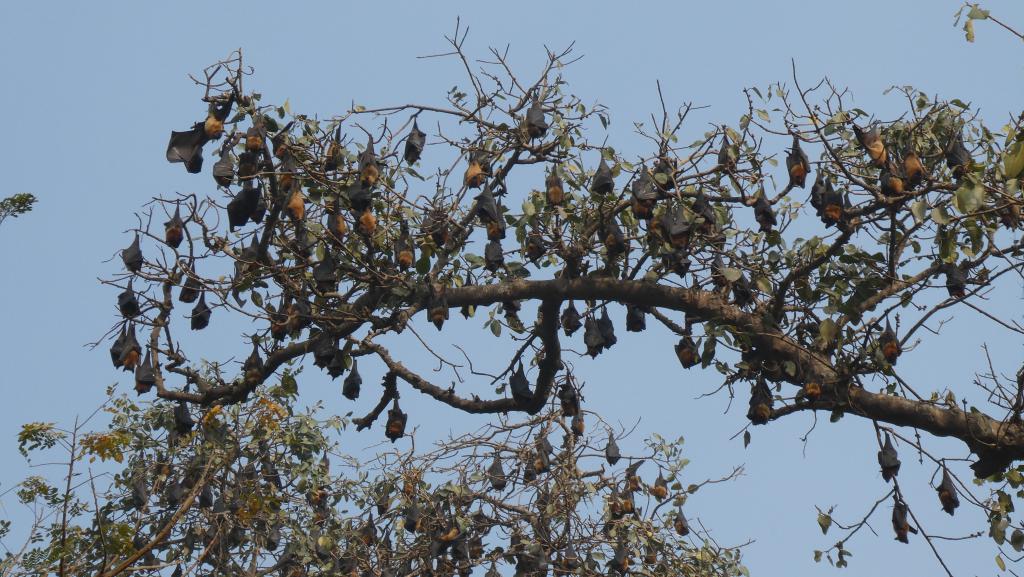
Did you also examine these containers?
Previously there was an examination, when we collected these sugary juices, but that was a bacteriological examination. We plan a virological one too, however. It would be interesting to see, what viruses can even tolerate these highly sugary environments.
How dangerous is this virus to humans?
It has a roughly 70% mortality rate, it is one of the highest risk infections. So, if someone falls sick, there is a high chance that they are not going to survive. This is why it is placed on the WHO priority list and why so many people research this sickness, mainly for prevention purposes. In Bangladesh there aren’t a lot of infections, in the past 20 years there have been around 300 registered cases. However, as the sickness is this severe, it is worth paying attention to it and getting a better understanding of the virus, so in case of higher numbers of infections we can react.
How should we imagine a collection of samples like this?
During the night, when the bats are not on their roosting tree, we lay down large plastic sheets, so when they return from foraging, this is where they will urinate. We got up at around 3am, and by 4 or 5 in the morning we were already on site, placed the tarps, and after an hour or two of waiting, we could start collecting the samples. This was at around 7am. Essentially, we collected urine samples in pipettes from the tarps, this is what we transported to the lab in the morning for processing. The purpose of this methodology is to avoid needlessly stressing the animals, who play an important role in pollinating, therefore are crucial actors of the local ecosystem.
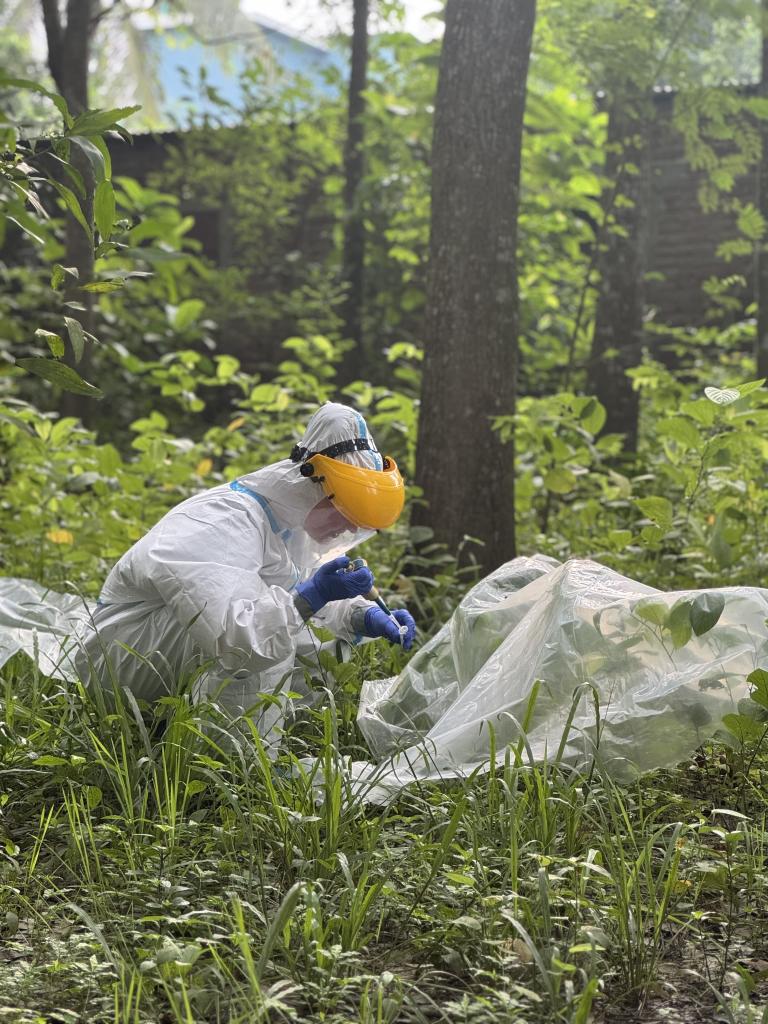
What was the greatest takeaway for you, either on a professional or personal level of this voyage?
As a professional, it was the viruses we worked with, as I had the possibility to work with viruses that I only encountered in textbooks in Hungary, this was a huge thing for me professionally. On a personal level, I had the possibility to visit a place where I probably could not have travelled on my own. Bangladesh is not a tourist destination, but they are very welcoming. I had to chance to experience a completely different culture, different people, a welcoming environment.
It was eye-opening to see and experience a place where, sadly, environmental destruction is widespread and natural habitats are scarce: the whole country is so densely populated with towns and villages. I’d love to bring everyone here once so they could see how precious what we have back home in Hungary really is.
For example, there is no established sewage system: wastewater flows through concrete ditches under and alongside the pavements. Because of the large population, water purification is also difficult. The locals’ immune systems have mostly adapted, but we could only drink bottled water, we even had to rinse our toothbrushes with it.
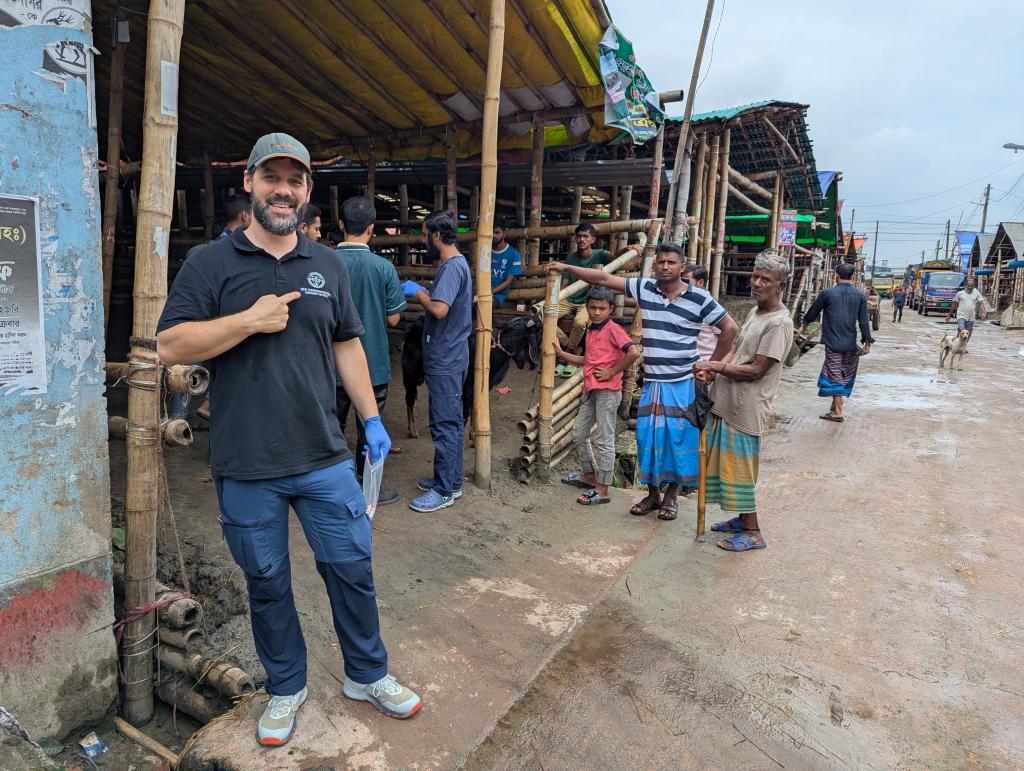
When people read about expeditions like this, the question often arises: what might you have brought home with you?
The regulatory system for handling different diseases is extremely strict: even to be able to work with them requires strict permits, let alone transporting them. The goal, as in most cases, was not to bring these pathogens back, but to process the samples on site. This is why we took a mobile laboratory with us, which allowed us to carry out most of the examinations locally, together with the local experts and students.
In developing countries, more and more regulations now stipulate that researchers cannot take samples out of the country, but must process them there. This is perfectly reasonable, as it makes it possible to train and support local colleagues. For example, by sharing knowledge and equipment with them, so that later they can perform the same examinations themselves.
Can you give an example for this?
On one occasion, while I was running a PCR reaction – something we routinely teach our BSc students in both practice and lectures back home – a veterinary student came up to me and perfectly described the process step by step. I was surprised and asked whether they had classes on this subject. He replied that they did not, and that he had learned it from YouTube, but had never actually seen how it is carried out in practice. That was why he approached me, because he was very interested in the procedure.
It was astonishing how precisely he had learnt and understood the theory, and how he was able to connect it to the practice. That is genuine thirst for knowledge.
What other research destinations are still planned?
We definitely plan to return to Bangladesh. In addition, we have started establishing contacts with local partners in Cuba, and if all goes well, we will be able to travel there in November. There I will once again turn to my own area of interest and focus on canine distemper. It appears that there may be a distinct strain present in Cuba, but this has not yet been proven, so our goal is to go out and determine which strain of canine distemper is circulating there. It would be incredible if we managed to confirm and describe a new strain. This virus does not only occur in dogs, but also in many mammal species, particularly among carnivores.
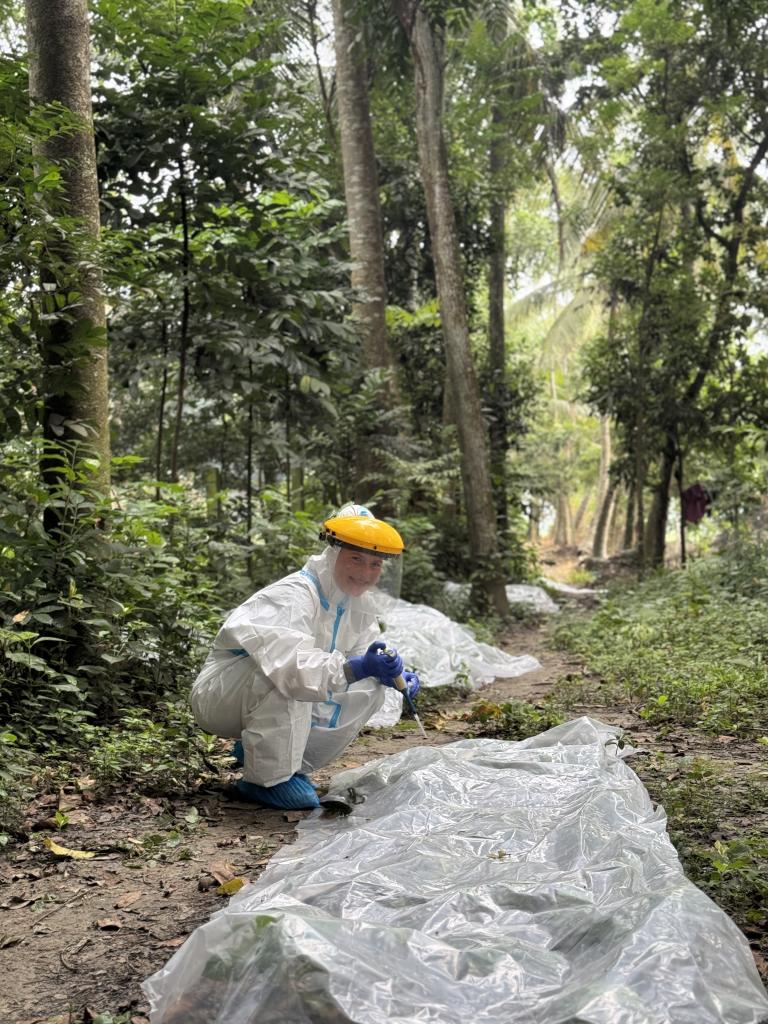
Here in Europe, it has already been detected in jackals, golden jackals, grey wolves and even big cats. Because of its broad host spectrum, it is also important to address from a conservation perspective. For example, in Hungary we have identified it in otters, which are a strictly protected species. In small, narrowly distributed populations, the disease can even lead to extinction, as it is capable of causing a severe decline in numbers. In the United States, canine distemper decimated the last wild population of black-footed ferrets. In 2021, however, a black-footed ferret was successfully cloned, and intensive work is being carried out to save the species (last year, one of the cloned individuals even produced healthy offspring – ed.).
It is important to stress, however, that this disease does not pose any danger to humans.
- Log in to post comments
University of Pécs | Chancellery | IT Directorate | Portal group - 2020.


















